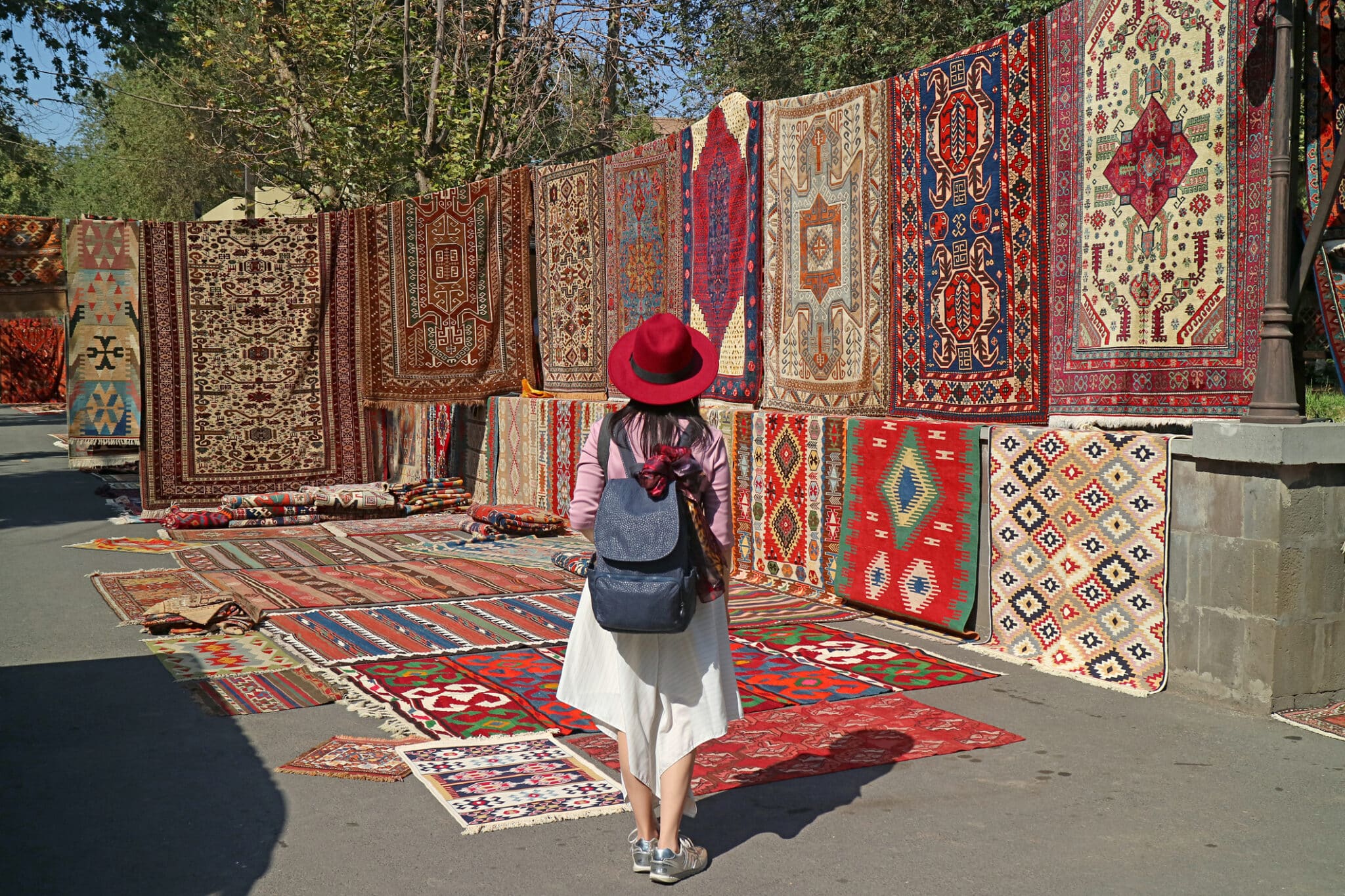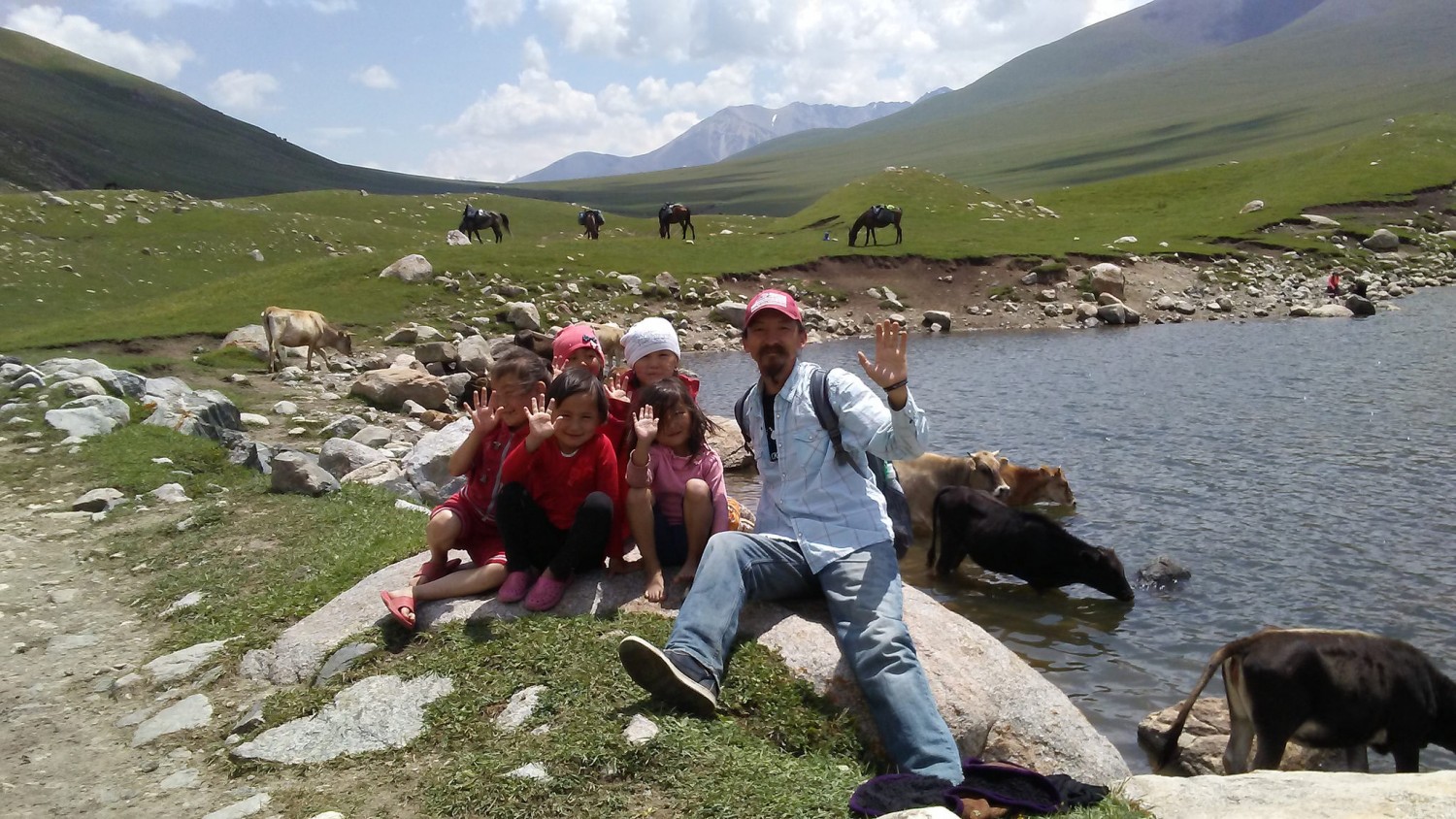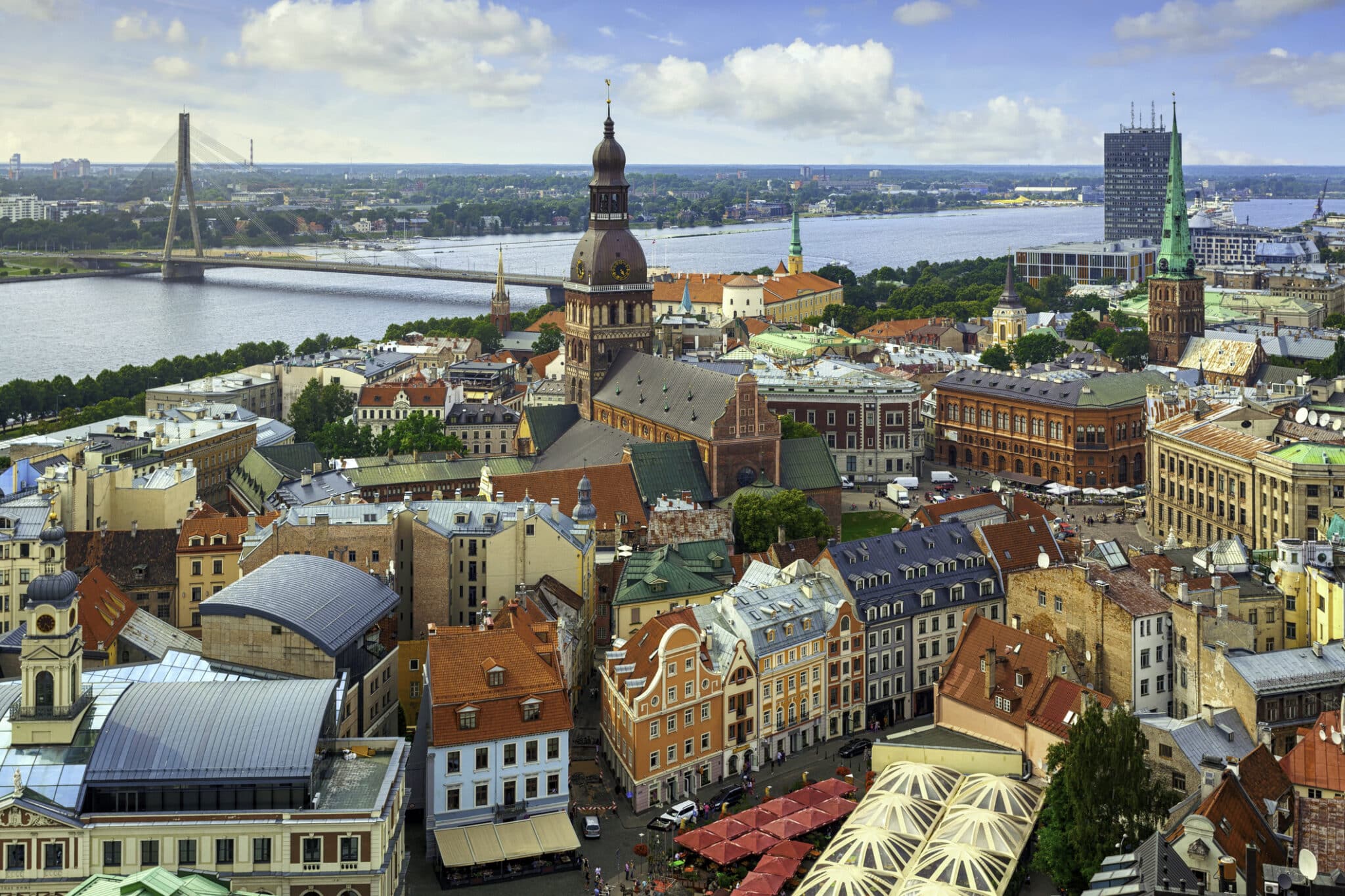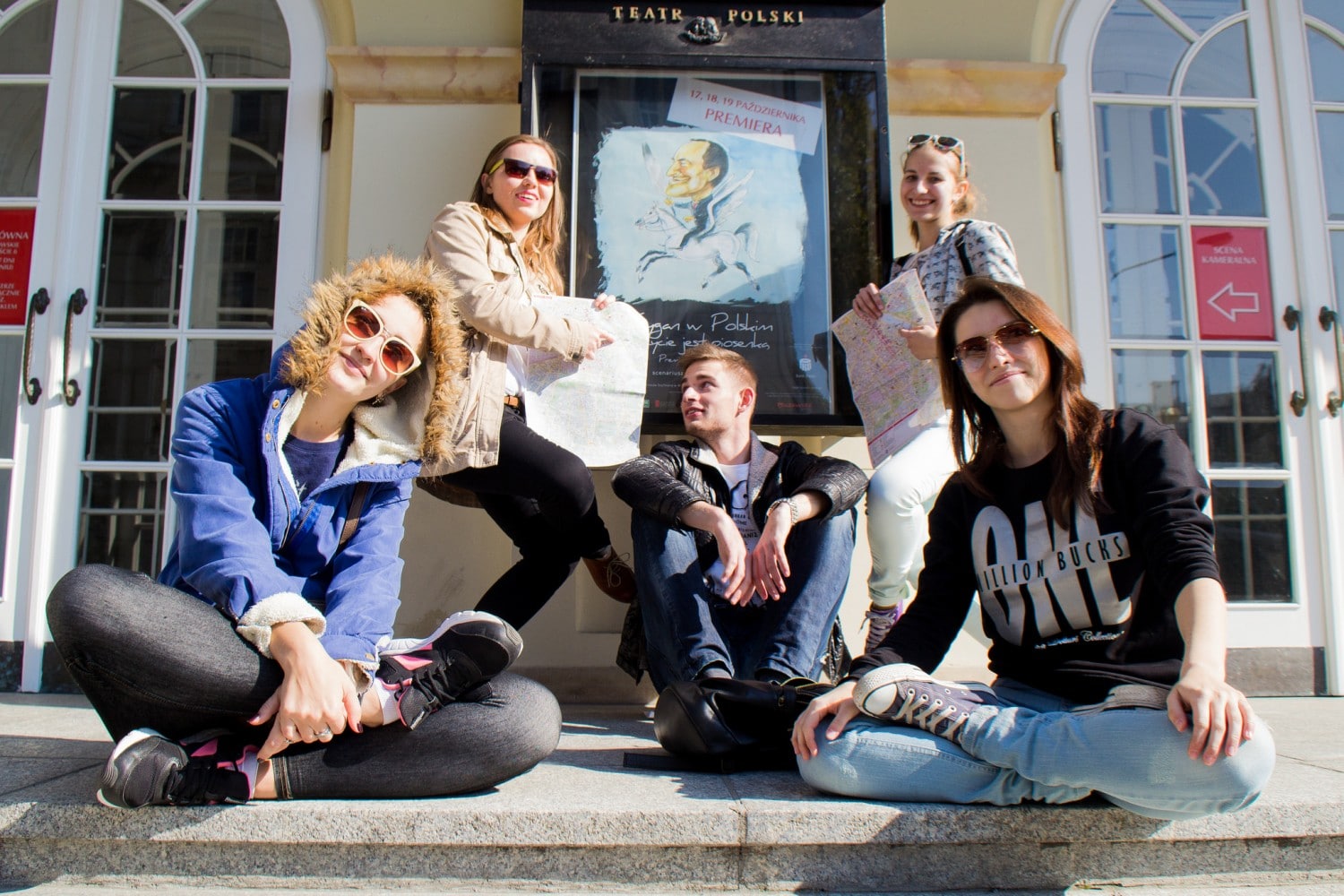What’s it really like to live in Warsaw for a semester? Staying long-term in a city is much different from just vacationing there. You’ll need to navigate more of the practical, everyday services of the city and budget to include more miscellaneous and long-term expenses. Thus, this guide covers everything from haircuts to pharmacies and from gyms to computer repair. Its advice comes from SRAS staff on the ground in Warsaw as well as graduates of SRAS programs in Poland.
A Practical Introduction to Warsaw
Warsaw’s historic districts were rebuilt from their ruble after WWII. After decades of Communist rule, the Polish market economy is now growing fast and is the first in the former Soviet bloc to be reclassified as “developed.” Warsaw is booming with coffee, foodie havens, and green spaces filled with culture. While still facing many economic, political, international, and demographic challenges, Warsaw is a true case study in resilience.
Warsaw is perfect for those students interested in security studies in their full range – from cyber and military security to managing economic and demographic trends to produce a stable society in a changing world.
The climate in Warsaw (humid continental) is quite mild and similar to what you would experience in the Northeastern United States or eastern Canada. Winters are cold and summers are warm, while spring and autumn are mild. Expect to see snow from late November to the end of March. There is not usually a huge difference between night and day temperature. Rain is not uncommon. Come prepared.
Warsaw has experienced tragedy and resilience in abundance throughout its history. Still facing major challenges today, the city is obviously the capital of a country that has managed to rebalance international and domestic interests to its advantage.
For more on the history of Warsaw, see this article on GeoHistory, also part of the SRAS Family of Sites.
Budgeting Basics for Warsaw
Students in Warsaw report spending about $95-115 a week average over the course of their stay. This covers food, city transport, school supplies, modest weekend entertainment, and other general living expenses. Note that this guide assumes 4 złoty= 1 US dollar. Prices current as of April, 2025.
Packing beforehand: Bring appropriate clothing, any electronics you need, and any prescription medication you are taking in amounts to last your time abroad. Check our packing guide for more information on preparing for your trip.
Card Fees. Call your banks and credit cards! Let them know the dates you’ll be abroad, otherwise, they tend to shut them off when they appear abroad – assuming they’ve been stolen. Note that most US banks will charge fees for every transaction you make abroad. $5 and/or 3% for every ATM withdrawal, for instance, is not uncommon. Make sure you understand these fees and factor them into your budget. See our Guide to Managing Cash Abroad for more information.
Local Currency or “Your Own Currency?” Some ATMs, retailers, and cafes will give you this option. Always pay in the local currency. It may sound convenient to have your bill brought in dollars, but it will always be higher. You will be paying at the store/ATM/cafe internal exchange rate. This is always worse than the exchange rate you will get from your bank or credit card company if you simply use your card to operate in the local currency.
ATMs: Always use ATMs that are connected with banks. Avoid those machines that are unbranded or privately branded.
Flexibility: You should always plan some flexibility into your budget. There will always be expenses that you didn’t plan for – a new umbrella, a better coat, a short trip that a new friend invites you on that is too good to say no to, you get the point.
- Complete Guide to Managing Cash Abroad for more information.
Food and Shopping in Warsaw
Average weekly total food spending: ~$35-$55 per week
Groceries: With food and groceries, it’s easy to live on $20-25 a week if you cook for yourself.
Fast food: It depends on what you get, but between 5 to 12 USD should get you filled up.
Coffee: A lot of places in Poland have Lavazza coffee vending machines, which sell drinks with instant coffee for around 6 zl (~1.4 USD); A good latte, with some fancy add-ons like vanilla, will bring you to about 20 zl for a medium, which is about 4.65 USD.
Sit down cafes: This can also vary a lot but generally a budget of about $10-20 should work, depending on the place and if you buy alcohol. If you really wanted to go all-out, budget about 30 or so.
Student Reviews of Eating Out and Shopping in Warsaw
- Guide to Warsaw Cafes and Coffee
- Guide to Shopping in Warsaw
- Vegetarian Guide to Poland
- Kosher in Poland
Transport in Warsaw
Average weekly transport spending: ~$3-10 per week
Maps: Jakdojade.pl is the map and navigation service that locals use. You can install it as a mobile app. It has the only public transportation route planner for the whole city including the subway, busses, etc.. It works in Warsaw and 22 other cities in Poland. (The name ‘Jakdojade’ is from the Polish phrase “Jak dojadę”, meaning “How do I get there?)
Public transportation: The transport authority in Warsaw is ZTM. Extensive tram and bus lines reach the outskirts of the city, including Praga (a district across the river). The metro system is more limited, but growing. There are maps located inside whichever transport you’re using, and signs are, for the most part, posted in English and Polish. For 30 days of unlimited rides on all forms of transit (trams, buses, metro, suburban trains), you’ll pay about $15 with a student discount of 50%. For 90 days, you pay just $35.
Taxi: Use the Bolt, Uber, or the local variant, Eurotaxi, smartphone app. Warsaw’s cabs usually cost between $2-6.
Bikes: There is also a good city bike system in Warsaw that is available from about March until November. You can register online and the first hour every day is free.
Regional train lines allow easy travel from Warsaw to the northeastern lake district of Masurian, north to Tricity (Gdansk, Gdynia, and Sopot), or south to Krakow, to name just a few places of interest.
For more on transport in Warsaw, see this article from our sister site, GeoHistory.
Communications in Warsaw
Average total MONTHLY spending for communication: $1-4
See our Packing List for more information about bringing electronics abroad.
Mobile service and data: SRAS requires that students have phones that work locally while abroad. Students have several options for this.
Each option has multiple providers with multiple plans. Consider carefully the features you will actually use – usually data. Calling rates are often not as important as you can easily use WhatsApp or similar web-based communication apps. Each provider usually offers both SIM and e-SIM options. Newer phones can accept e-SIMs, usually multiple at once for added convenience.
- Get local cell service. This is usually the cheapest option if you don’t already have an international plan. SRAS will assist you getting a local number if you don’t have a number that otherwise works in Georgia. Cell service in Georgia is typically pay-as-you-go with no long-term contract. Students with unlocked smartphones who get local SIMs for data and calling report spending around $2-4 per month for texts, calls, and 4G.
- Get an e-SIM. These are most useful if you plan to travel between countries while abroad. They often have roaming included whereas local or US numbers do not. You might try Airalo or one of the many other providers out there.
- Have a US-based plan with international roaming. This is often the most expensive option. T-Mobile seems to have the most favorable international plans.
If you plan to use your current phone for any of these options, you will need to make sure it is not “locked” (tied to a single carrier) and can accept a new or additional SIM or e-SIM. Contact your current provider if you are unsure.
High-speed Internet: Private ethernet companies charge around $20 per month, but if you have this, you’ll likely be with roommates and splitting the cost.
Internet cafes / City Hotspots / Free WiFi: Internet cafes cost around $1-3/hour and are becoming rarer. Public WiFi is everywhere in Warsaw. The train stations and shopping malls as well as most coffee shops/cafes offer it. The whole of downtown Warsaw is also basically a giant free hotspot.
Computer Repair: information coming…
Post: The main post office in Warsaw is at ul. Świętokrzyska 31/33. It is open 24/7. You can find other a post office near you by typing in your address here.
Laundry and Cleaning
Average spending on laundry and cleaning: $~1-3 per week
Laundry and cleaning are often overlooked expense categories. Actual expenses can vary widely based on how you decide to handle them.
Hygiene: Shampoo, conditioner, deodorant, and toothpaste – in brands you are likely to recognize – run about $2 per package. Feminine hygiene products are around $4 per box.
Laundry: Warsaw has many self-service laundry facilities. You can find them on Google Maps.
Health and Medicine in Warsaw
Budgets for health and medicine can vary based on student lifestyle and needs. Any SRAS concerned about this category is encouraged to discuss it with their SRAS representative.
Water/Water filters: Warsaw’s water is safe and the city filtration system is modern. However, most residents and tourists alike now stick to bottled water or at least water they have filtered themselves. Bottled water is cheap ($2 for 5 liter bottles) and widely available. Water filters ($10-15) are widely available in larger supermarkets appliance stores.
Doctors, etc. Healthcare International Family Practice offers doctors and nurses that speak English. The best list of larger, 24-hour pharmacies is provided by the US Embassy in Warsaw. Otherwise, just look for the word “apteka” – that’s Polish for “pharmacy” and, surprisingly, many pharmacists in Warsaw speak English.
Fitness: Recommendations for gyms needed! For outside running, try the Wisla River front or one of Warsaw’s various parks (Park Łazienkowski and Ogród Saski are particularly recommended).
Haircuts: A list of affordable hairdressers in Warsaw can be found on Yelp. Most hairdressers and barbers won’t be able to speak much English though, so bring a picture of what you want your hair to look like.
Culture and Entertainment
Museums: Warsaw abounds in museums on nearly any subject that might interest you. Museums are $5-15, but generally a student discount will keep the price below 10 for any of these.
- Warsaw Student Museum Reviews (by SRAS staff and students)
Performances: A ticket to a movie will run about $5-12. Rock concerts can run from $8-infinity. Theater tickets can run about $3-200.
Nightlife: Going out at night is surprisingly cheap too: $5 cover charges at central clubs with $3 for a beer, or $5 for a cocktail.
The Erasmus student group and the CC International Group are both fairly active too, so sometimes they’ll organize gatherings at a club or bar downtown and offer discounts. This is probably one of the reasons Warsaw is so popular for students. Another example would be ice skating, which costs about $10-20 depending on where you go.
Charitable Giving and Volunteering
Charitable Giving: You can give used items to Caritas, the charitable arm of the Catholic Church in Poland. They are headquartered at Krakowskie Przedmieście 62 in Warsaw but have big bins labelled “Caritas” throughout the city, especially in residential areas. Your items will be distributed to those in need.
Volunteering: Some SRAS students have, in their freetime, volunteered with church groups and charities on the ground in Warsaw. Ask if you are interested in getting involved.
Travel from Warsaw
If you are going to blow some money in your budget – SRAS recommends you do it on travel. You can find several student-reviewed independent trips on this site. See more of the country and wider region and meet more of the people while you have the chance to do it quite inexpensively.
Let SRAS know EVERY TIME YOU LEAVE WARSAW! This is for safety, but also because there may be registration or visa issues involved in your trip that we may need to advise you on.
Find Out More About…
- Polish Holidays
- Polish Cuisine
- Arrival to Warsaw, SRAS Student Impressions
- Warsaw Student Housing
- SRAS Warsaw Programs
SRAS Students on Living Warsaw
What is life in Warsaw really like? To help you stay up to date, we’ve asked our students to share what they found while abroad in Poland!
Finding Things
SRAS: First, think of the city – what was available in terms of culture, shopping, and services. Were you able to find things to do and the goods and services you needed? What was missing? Were there any pleasant surprises?
Allie Schauer (Summer, 2019): Warsaw has a little bit of everything! There were enough museums, memorials, nightlife, and parks to stay busy. My most exciting and surprising find was Pinball Station, a pinball and video game arcade in Warsaw near the Night Market. Going to the arcade for a couple hours before grabbing a late-night snack at the market is an awesome way to start the weekend, and a really nice way to balance out some of the more emotionally heavy history museums and memorials. The Złote Tarasy mall is right across the street from the school – the food court and movie theater there are great. There were also stores at the mall and all around Warsaw where you could buy just about anything you need.
Prices
SRAS: How were the prices abroad? Did you find your host city affordable in terms of food and entertainment?
Allie Schauer (Summer, 2019): Prices in Warsaw are extremely affordable, especially compared to those in Austin, Texas, where I go to school in the US. You can get a nice traditional meal at a sit-down restaurant for less than 15USD and a quick lunch from a food truck for around 4-5USD. On weeks where I made my own food for every meal, I would spend about 20-30USD on groceries. Entertainment is also affordable. Movie tickets range in price depending on movie and showtime, but are about 8-10USD. Most museums and other entertainment options with entrance fees have student prices with a valid school ID, and tend to cost about 3USD.
People
SRAS: How were the people you met? Were you able to generally complete transactions with any professionals you interacted with (at offices, cafes, shops)? Did you find local friends to share your free time with?
Allie Schauer (Summer, 2019): I have been studying Polish and so had no problem speaking and being understood in Polish; other people on the trip didn’t speak any Polish but had very few if any issues with speaking English with professionals in Warsaw. This was not the case in smaller, less international cities and towns, like Łódź and Zakopane, where English is less common. However, we were able to work together to translate and communicate, so the language barrier was navigable. I tended to spend my free time with the friends I was making through Collegium Civitas and the study abroad program. However, I became good friends with my coworkers during my internship at the POLIN Museum of the History of Polish Jews, and enjoyed my time and conversations with them.
Getting Around
SRAS: What modes of transport did you use? Did you generally find them convenient and affordable? Did you travel outside the city during your stay?
Allie Schauer (Summer, 2019): I took the tram every day, and frequented the bus, train, and subway systems as well. They do not always stick to their time tables, so you have to be patient and flexible. Additionally, most don’t have air conditioning, which was a little rough during the heatwave we had this summer. Despite these little things, all the transport systems are convenient, easy to figure out, and have affordable tickets. I traveled within Poland to Krakow, Zakopane, Łódź, and Gdańsk, and outside of Poland to Berlin and Prague.
Best and Worst Things
SRAS: What was the best thing about your stay in Warsaw? What was the worst?
Allie Schauer (Summer, 2019): The best part of my stay in Warsaw were the cultural events that I didn’t expect or plan for. Just by exploring and being in the right places at the right times, I was able to see protests, parades, festivals, and concerts. The most memorable to me were the set of concerts in front of the Palace of Science and Culture on Constitution Day and the March of Remembrance around the former Warsaw Ghetto areas on the anniversary of the liquidation of the ghetto. I genuinely can’t think of a “worst part.” It got really hot for about a week and we had several days of heavy rainstorms, but the weather never stopped us from enjoying our time in Warsaw.
Guides to Other Cities

SRAS Guide to Living in Tbilisi
What’s it really like to live in Tbilisi for a semester? Staying long-term in a city is much different from just vacationing there. You’ll need to navigate more of the practical, everyday services of the city. You will also need to budget for more miscellaneous and long-term expenses. Thus, this guide covers everything from haircuts […]

SRAS Guide to Living in Yerevan
What’s it really like to live in Yerevan, Armenia for a semester? Staying long-term in a city is much different from just vacationing there. You’ll need to navigate more of the practical, everyday services of the city and budget to include more miscellaneous and long-term expenses. Thus, this guide covers everything from haircuts to pharmacies […]

SRAS Guide to Living in Bishkek
What’s it really like to live in Bishkek for a semester? Staying long-term in a city is much different from just vacationing there. You’ll need to navigate more of the practical, everyday services of the city and budget to include more miscellaneous and long-term expenses. Thus, this guide covers everything from haircuts to pharmacies and […]

SRAS Guide to Living in Riga
What’s it really like to live in Riga, Latvia for a semester? Staying long-term in a city is much different from just vacationing there. You’ll need to navigate more of the practical, everyday services of the city and budget to include more miscellaneous and long-term expenses. Thus, this guide covers everything from haircuts to pharmacies […]

